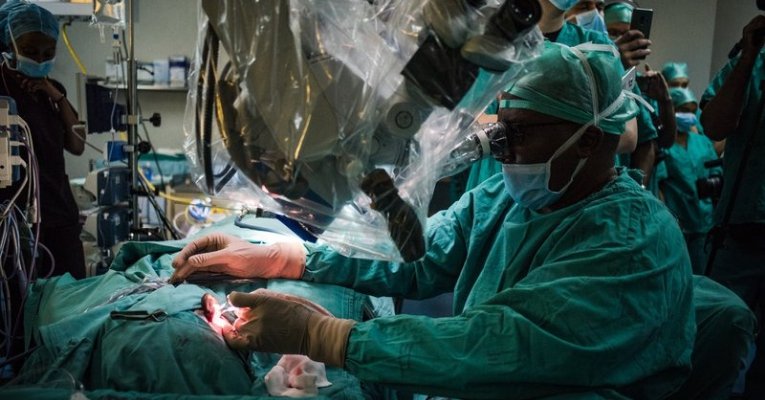
A group of South African doctors in the capital city Pretoria has recently been hailed as pioneers in global medicine after they performed the first-ever middle ear transplant.
The achievement–that used 3D-printed technology to reconstruct the broken bones of a middle ear is now being celebrated as a long-term solution to conductive hearing loss. What is more, the surgery can be performed on people of any age, such as newborn babies, curing patients of a form of deafness caused by physical damage or infection in the middle ear and congenital disabilities and metabolic diseases.
The first patient to undergo that procedure was a 35-year-old man that lost his hearing after a car accident devastated his middle ear. Because of the nature of his trauma, the operation lasted around an hour and a half, as Legit reported.
The brains behind the medical team at the University of Pretoria’s Steve Biko Academic Hospital, Professor Mashudu Tshifularo, have been studying conductive hearing loss over the past ten years, but in the past two years he began to investigate the use of 3D printing technologies for scanning and entirely recreating the smallest bones, or ossicles, of the middle ear: the hammer, anvil and stirrup.
In a celebratory press release by the South African Department of Health, Tshifularo explains:
“By replacing only the ossicles that aren’t functioning properly, the procedure carries significantly less risk than known prostheses and their associated surgical procedure.
We will use titanium for this procedure, which is biocompatible. We use an endoscope to do the replacement, so the transplant is expected to be quick, with minimal scarring.”
Tshifularo also told local radio station Jacaranda FM:
“This was one of our patients we have been waiting for, for this reconstruction for almost three years now because they are not affordable … [but] we have done something new in the world, and people will remember us for that.”
While he expressed pride that he was the first ever to revolutionize the new approach to address hearing loss, Tshifulara is still steadfast that the treatment should eventually become accessible and affordable for poor and working-poor patients, like those that use South Africa’s public hospitals.
For Tshifularo, “innovate or perish” sums up his approach to medical science–both in terms of education, invention, research, and clinical procedures, and also in terms of devising new solutions to the array of problems faced by struggling communities.
He hopes that he and his group at the university’s Department of Otorhinolaryngology (Ear, Nose, and Throat) will receive the necessary funding from the government and private sponsors to make sure that this innovative approach to hearing loss treatment can get off the ground.
South African Minister of Health Aaron Motsoaledi has already pledged that the Department of Health will “do everything in our power to assist and mobilize resources to make sure that Prof. Tshifularo gets all the help he needs for this far-reaching innovation.”
Reference: The Mind Unleashed












I had a eardrum transplant 58 years ago with a lambs eardrum by microscope at the mass general hospital in Boston Mass by Dr. GORSS a German doctor.
ReplyDeleteI had a whole in the top layer over the eardrum and was loosing my hearing. for years I had to have the top layer of skin taken off because it grew hair.. the operation took 9 hours by microscope, I can hear because of it. it was called a lambski
ReplyDelete
ReplyDeletecosmetic surgery tunisia
chirurgie dentaire tunisie
penoplastie
docteur malek
operation esthetique tunisie
prix chirurgie esthetique
that's a great new, congrate, hotmail.com
ReplyDeleteBest pizza in Glen Burnie MD- 21061 serve only the greatest meats, hottest veggies, and bread that are baked clean every day, crafted from our very own homemade doughs
ReplyDeletePrezzi della chirurgia estetica in Tunisia
ReplyDeleteThis comment has been removed by the author.
ReplyDeleteTrouver les meilleurs prix de location voiture Tunisie
ReplyDelete